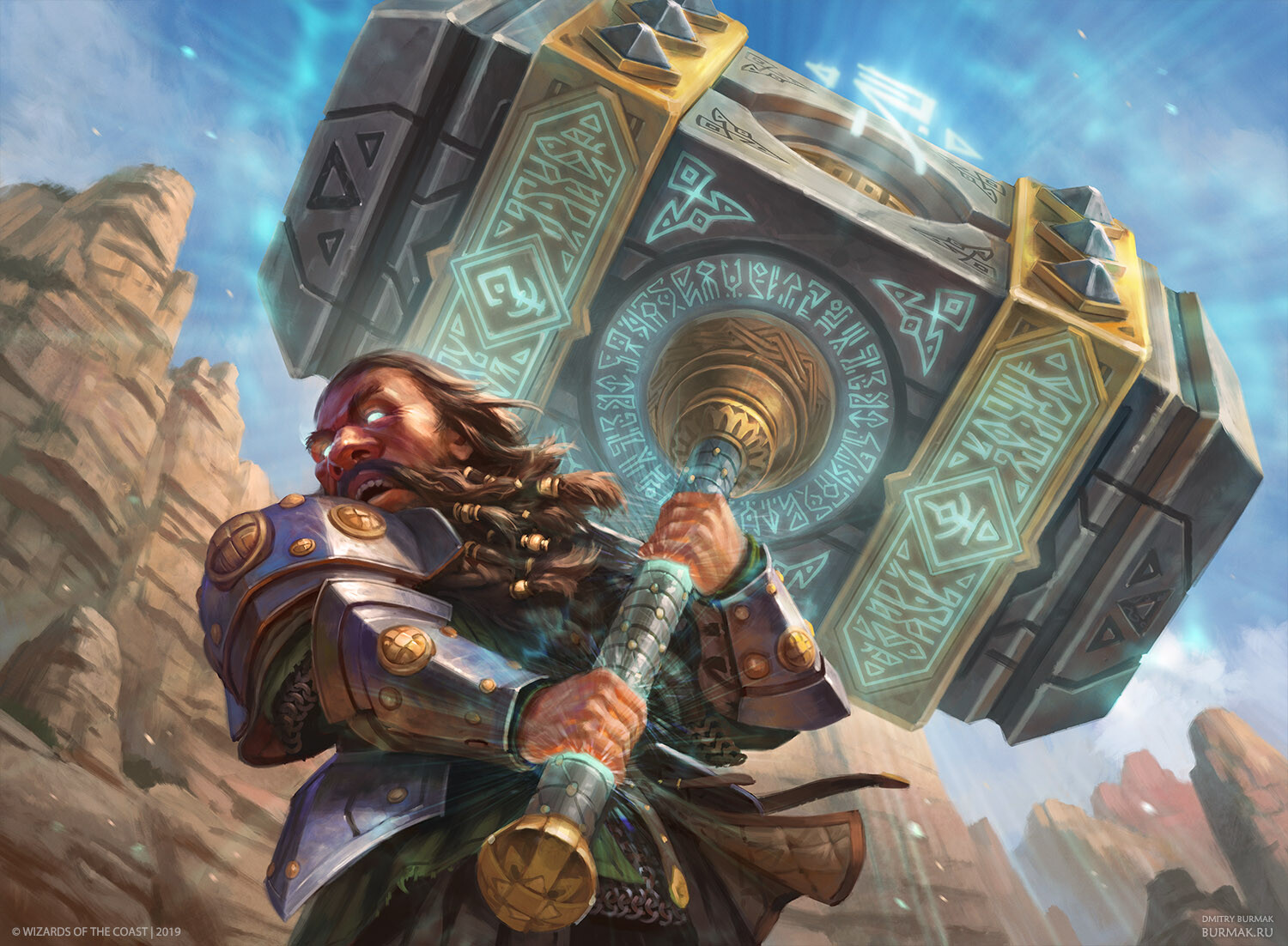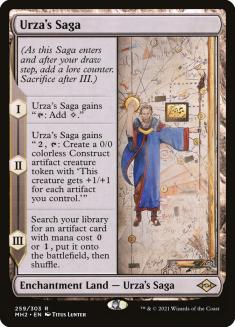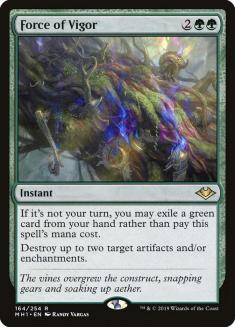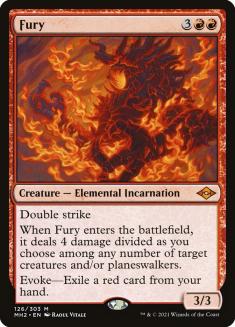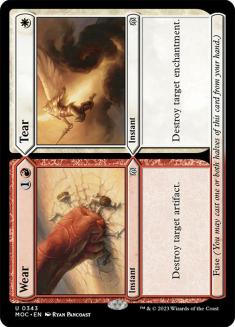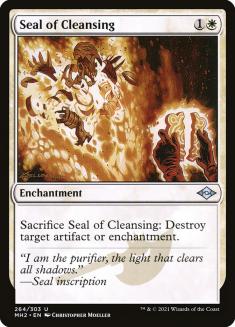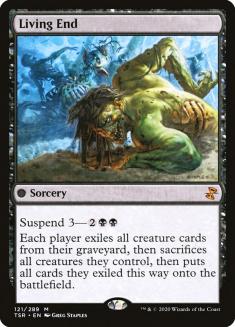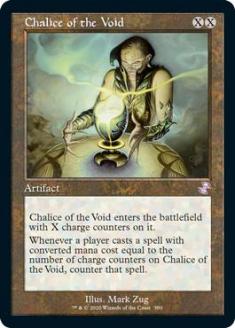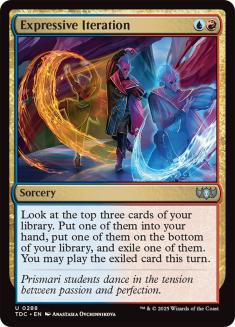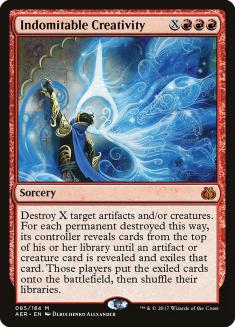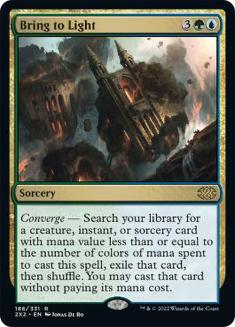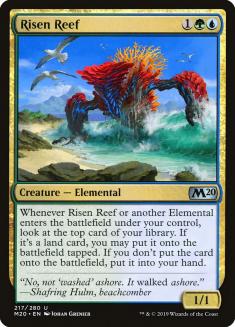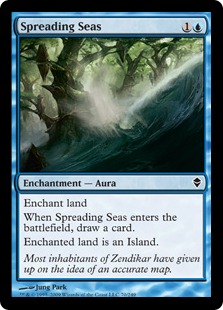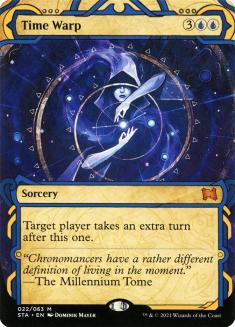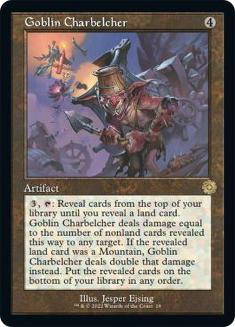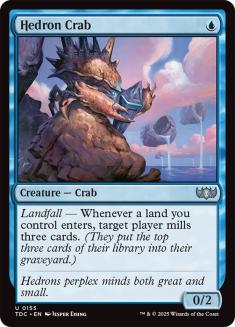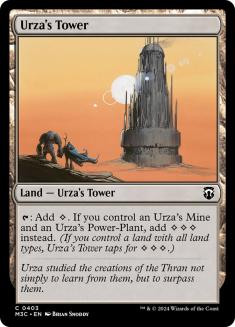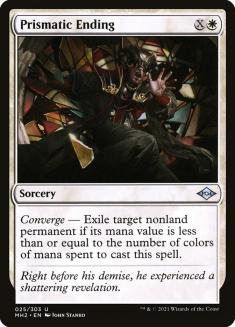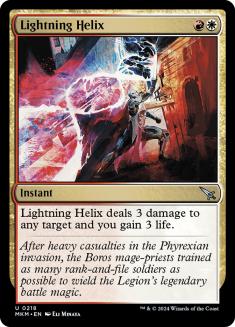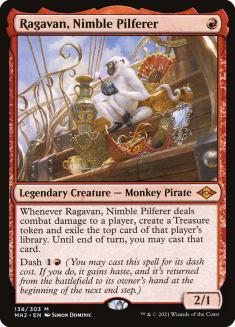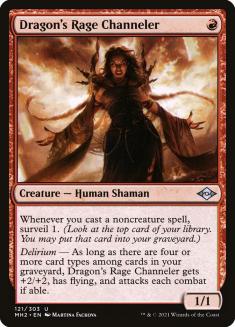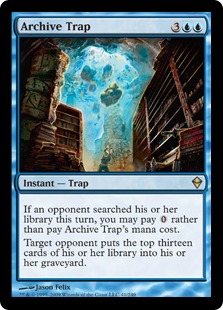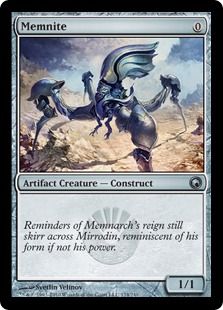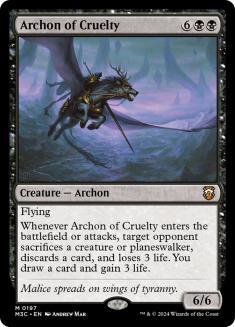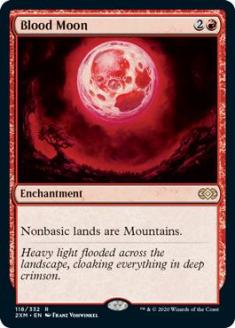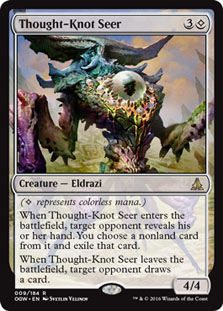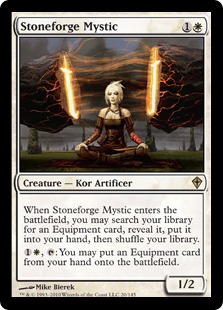On a week-to-week basis, I like to cover the new breakout decks in Modern. Trying new things is great, learning if a new thing might be the next actually big thing is great, and just knowing if you need to adapt your primary deck to adjust for a new thing is great.
But now it’s serious event time, and that means making a serious deck decision.
These are the eight Modern decks I would consider for the SCG Invitational at SCG CON, and most importantly why I would or wouldn’t play each of them.
1. The Obvious Choice: Orzhov Hammer (Lurrus)
Creatures (23)
Lands (22)
Spells (15)

Orzhov Hammer (Lurrus) is really damn good. In a broad context, it’s probably the best or most powerful deck in Modern.
The most important aspect of Orzhov Hammer honestly isn’t even anything that ends up in the three-word name of the deck. It’s just Urza’s Saga. Urza’s Saga is an absolutely disgusting and broken card, but every other Urza’s Saga deck in the format is just lacking. Their non-Urza’s Saga threats aren’t good, or they’re too exposed to the answers to Urza’s Saga, or they’re just slapping Urza’s Saga into a deck that doesn’t really enable the card.
Orzhov Hammer just does it all. The entire non-Urza’s Saga section of the deck is the best combo deck in the format. It’s exposed to Force of Vigor, but only in the sense that it has too many good things for Force of Vigor to handle if you just pace it right. And the Urza’s Sagas that go off are absolutely the best in the format.
The only bad thing I can even say about Orzhov Hammer is that the fail rate is noticeable. You just mulligan a lot more than a “normal deck” because your hands that aren’t about to combo or Urza’s Saga aren’t good, and you keep a decent amount of speculative six-card hands that are just missing the Colossus Hammer and drawing to twelve or however many outs. Ingenious Smith helps boost some of the marginal hands here, but if you’re extremely adverse to non-games, Orzhov Hammer is likely to rub you the wrong way.
My advice? Learn to enjoy winning a lot even if you lose without agency sometimes.
I alluded to another reason to not play Orzhov Hammer at the start: it’s the broad best deck, but other decks can make up the gap in metagame positioning. People have to be prepared to beat Orzhov Hammer, and even if it is still good, another deck might beat up on the most popular decks and not be in the crosshairs of the format. Really, you can’t be that wrong if you play Orzhov Hammer, so this is just how much you trust your reads.
The final reason to not play Orzhov Hammer is difficulty. Playing the deck at an average level is easy, but not very good. Playing the deck well is hard. It’s a lot of the old Infect style of knowing how to expose threats to both force answers if they have them and keep ahead of them if they don’t.
I have a couple of tips here besides “put in the hours.” First, really, really think about how you will spend every mana from Turn 1 onward if you’re trying to go quickly. That’s the classic Affinity mindset. Second, remember you aren’t obligated to go quickly if your opponent is playing defensively. When that happens, your goal is to put your opponent in check each turn using non-combo pieces when possible. Ingenious Smith threatening to get out of range of red removal is a big one; playing Urza’s Saga without a second good Force of Vigor target is another.
Think about their removal, and then play the threat that makes the worst-case removal spell have the least impact. That worst-case removal is usually Wear // Tear, Force of Vigor, Fury, Chalice of the Void, or Engineered Explosives, but there are probably a couple more disasters I didn’t list here to consider in specific matchups.
The above JUJUBEAN__2004 list is specifically aimed at beating things other than the mirror. To win that matchup, you want more Seal of Cleansing and some way to clear a Lurrus of the Dream-Den.
2. The Other Obvious Choice: Temur Crashcade
Creatures (15)
Lands (24)
Spells (21)
Sideboard

Temur Crashcade is also really damn good. If Orzhov Hammer (Lurrus) isn’t the abstract best deck in Modern, Temur Crashcade might be.
Why not Living End, the other contender for abstract most powerful deck? People have just have sufficient hate now.
There’s a north and south pole for cascade decks in Modern. People can have a bunch of hate, in which case you want to show up with Temur Crashcade and punish them when they draw too much or too little hate, or they can come up short on hate, in which case you just Living End them and smush right through with Grief and Force of Negation. Technically there’s a third pole where they have a bunch of hate and big creatures that outclass the Temur backup threats, like a really spiteful Jund deck, but that’s a rare scenario where you just put down Violent Outburst for two weeks.
If you were measuring on the broad power scale, Living End is definitely the better of these decks, but Temur Crashcade is not much worse and the flexibility gives it more metagame wiggle room. And in this case, the metagame is loudly stating that it’s prepared for cascade decks in a way that makes Temur Crashcade the right choice of these two.
3. The Other, Other Obvious Choice: Azorius Control (Kaheera)
I don’t personally like Azorius Control (Kaheera), but with how much the deck is winning it would be malpractice to not tell you to consider it for this event.
Unlike these other decks, I don’t have a laundry list of good things to say about Azorius Control. I don’t really like the deck that much, and I’ve spent a lot of time talking about how and why it’s vulnerable. It just wins because the set of things it’s equipped to beat are exceptional at beating up on things trying to go around Azorius Control. Chalice of the Void; Teferi, Time Raveler; Counterspell; Spreading Seas; and Solitude just make a great spread against the best decks in the field.
Instead, I’ll add another reason I’m skeptical of Azorius Control: the round timer. This is the first paper event back for a lot of people. They are used to Arena rope telling them to make a play, and not used to the physical dexterity stuff that comes up playing in person. If you’re going to play Azorius Control, you need to work from Turn 0 of the match to make sure it reaches a non-draw conclusion.
4. The Up-and-Comer: Four-Color Blink (Yorion)
Creatures (18)
Planeswalkers (8)
Lands (28)
- 2 Wooded Foothills
- 1 Reflecting Pool
- 3 Windswept Heath
- 3 Flooded Strand
- 1 Snow-Covered Plains
- 1 Snow-Covered Mountain
- 1 Snow-Covered Island
- 2 Snow-Covered Forest
- 1 Sacred Foundry
- 1 Temple Garden
- 1 Steam Vents
- 1 Stomping Ground
- 1 Breeding Pool
- 1 Hallowed Fountain
- 1 Arid Mesa
- 4 Misty Rainforest
- 1 Prismatic Vista
- 1 Ketria Triome
- 1 Raugrin Triome
Spells (26)

On the other hand I do like Four-Color Blink (Yorion), and it would also be malpractice if it wasn’t on this list.
The obvious argument for Four-Color Blink (Yorion) is that the deck plays all the good cards. I do mean all, as there’s a reason the deck costs a million billion dollars. It has multiple good Incarnations with ramp to turbo out their Shriekmaw modes, a pile of generic good threats, and the best answer and card advantage spell in the format in Prismatic Ending and Expressive Iteration.
This “all good cards” thing is a huge deal, since the big issue with past four-color piles has always been the do-nothing hands. Sometimes your big finish is stopped, or maybe a bit slow, and your deck just didn’t do something. The “all good cards” Four-Color Blink deck doesn’t really have the dead-card issues of these other lists where you draw a bunch of the wrong parts of your two-part combo. Or they do something horrific like Teferi, Time Raveler your Bring to Light that just can’t happen to this deck.
That said… you might still want Risen Reef in your deck. You have enough Elementals and Ephemerates to make it pretty good. You just don’t have to play any of the bad Elementals to make it happen. I’m unsure it’s better than Mulldrifter would be, but you should consider it.
But just as importantly, the latest lists of the deck play the best specific cards in the format too. Spreading Seas is probably the pinnacle of this. I’ve already laid out Urza’s Saga as a premier threat of the format, and even if it’s only a limited number of decks with the card, every midrange deck absolutely needs to have answers to it. Spreading Seas does that well enough, and importantly does that in a way that also maximizes Yorion, Sky Nomad in other matchups. You definitely play all four copies of this card.
I was hyped up for the addition of Time Warp to this deck a couple of weeks ago as a way to true combo with a Wrenn and Six emblem or the Eternal Witness-Ephemerate setup, but in practice it just isn’t super-necessary. Technically there are the weird stalled out late-games where the combo might help, but much more commonly you just pay eight mana and they die to Yorion, Sky Nomad as giant Mulldrifter plus some. It’s just pretty classic companion deckbuilding to cut Time Warp here: why are you worried about what your big finish is when you always “draw” a free bomb at the top of your curve every game?
The reason to not play a four-color midrange deck hasn’t changed. Your cards are good because they’re generic good interaction against normal human beings. If your opponent decides to get weird with it and just dunk on you with some dumb linear deck, there isn’t a lot you can do. I actually expect the rise of Four-Color Blink to be the thing that lets Living End back into the metagame, but before that people are going to beat up on you with a bunch of other garbage. The fact that the Modern rounds of the Invitational are later is a blessing for this deck, since you can already set the stage to play against a less noisy metagame of better players by just winning in Standard.
5. The Best Linear Deck: Boros Burn (Lurrus)
Creatures (12)
Lands (19)
Spells (29)

Continuing the trend of me saying “this deck is great,” Boros Burn is great. I have no strong opinion on whether you should be playing Lurrus of the Dream-Den or not; feel free to tweet @BasicMountain and see if he responds or simply redirects you to his Cameo page.
If you asked me to make the case for Burn right now, I think I would point you towards the removal everyone else is playing. It all looks like Prismatic Ending or Fury, which let you hit them with Goblin Guide once before awkwardly trading, and doesn’t look like Lightning Helix. Or maybe I would point towards the fact I’m defining the format by the wider spread of answers people are playing, which implies they’re busy screwing around and not worrying about what happens when they start taking Boros Charms to the face. A more proactive format with more incidental lifegain would be a disaster for Boros Burn, but instead it just gets lots of time to kill its opponent before they do something or just draw more burn to finish the job.
If you wanted me to argue against Boros Burn… it’s just Boros Burn. Look at the deck Seth Manfield Top 8’ed Pro Tour Fate Reforged with in 2015. All that has happened is the deck cut the five worst cards for Skewer the Critics and a land now that it has Sunbaked Canyon. If at any point in the last half-decade you’ve decided you didn’t want to play Burn, the same thought processes are true today. I don’t expect people to come back around to Inquisiton of Kozilek plus Dragon’s Rage Channeler, but Brad Nelson as Jund Guy is probably a coin-flip matchup. People can also just decide to beat you with Kor Firewalker over Sanctifier en-Vec. I have no issues registering Burn, but your mileage may vary.
Whatever you do, just don’t register the “good” red one-drops in this deck. You’re Boros Burn, not some dumb midrange deck. Play smartly, turn cards directly into damage, and don’t get bogged down in the mundane games other people choose to participate in.
6. The Targeted Linear: Dimir Mill (Lurrus)
Creatures (8)
Lands (22)
Spells (30)

Dimir Mill (Lurrus) and Boros Burn are playing in the same domain, but Boros Burn is faster. Burn is also more reliable because all of its interaction is also burn, where Mill has specific mill cards and specific interaction it can draw in the wrong mix.
So why would Dimir Mill (Lurrus) end up on this list next to Boros Burn?
Dimir Mill is a targeted choice to beat better players on the better decks.
Boros Burn loses edge against better players. A lot of Modern involves life payments in exchange for mana, and you can gain a decent amount of equity against Boros Burn knowing when to fetch the right tapped or untapped land. There are similar decisions about knowing how to hamstring their hands that are right on the line of lethal and mulligan decisions towards relevant lines of play. Dimir Mill (Lurrus) doesn’t really have that, because it’s so far out of the scope of what normal decks prepare for. There’s a bit of how to dodge an Archive Trap going on, but that’s often just impossible.
On top of that, Dimir Mill (Lurrus) has a noticeable edge on Burn in two matchups: four-color piles where sometimes an Omnath, Locus of Creation or random Lightning Helix-style card can steal a game, and Orzhov Hammer (Lurrus) where Tasha’s Hideous Laughter is almost a one-hit knockout. Those are two of the decks I like the most for this event, and those are two of the decks I expect to be overrepresented among top players. The Azorius Control matchup is also good stuff, making three of the best decks three matchups you’re ready to face off against.
Once you get outside that realm, the comparison to Burn gets dicey. The raw speed of Boros Burn is really important, and other decks just naturally mitigate Tasha’s Hideous Laughter. Too many matches with Dimir Mill (Lurrus) against generic Modern decks end with your opponent exiling a Fury and a Solitude to Laughter while killing you a bit too quickly for you but not fast enough to beat Burn.
Oh, and people can just decide to play an Emrakul, the Aeons Torn and make every game difficult. That would be really rude, but someone will do that to you.
If you expect to play against a lot of the specific top decks of the metagame, Dimir Mill is a great next-level choice. The more you expect to face the rest of the field, the less the gamble pays off. But the Invitational is a high-stakes event with lots of good players, and that style of gamble is certainly on the table for this event.
7. My Pet Deck: Esper Reanimator
Creatures (8)
Planeswalkers (4)
Lands (24)
Spells (24)

I made my case for Esper Reanimator in a full article, and that entire article still stands. I’ve been into interactive combo decks like this for nearly two decades and it won’t stop any time soon. The flexibility of dunking on people with Archon of Cruelty or sitting back and letting Thoughtseize and Counterspell do all the work is really something special.
That said, Esper Reanimator is a bit short on putting up big-time results, and I don’t have a great reason why. Even in my bubble of loving the deck and having everyone I convince to play it love it, that makes me a bit wary. If you want to give Esper Reanimator a try and get bit by the good combo deck bug, I give you the green light; just take it with the caution that the wider metagame isn’t quite as high on the deck.
I have not gotten around to trying the newer Ephemerate build of the deck yet. I’m skeptical of moving away from Counterspell if you expect Azorius Control and longer games where you fight over variable pieces of hate, their counterspells, and their planeswalkers to be relevant, but Ephemerate plus Grief is really impressive when fighting decks with a narrower spread of things that matter that also are more likely to just fold to the first Archon trigger.
8. Somehow a Metagame Call: Izzet Midrange
Creatures (12)
Lands (18)
Spells (30)

This is about a single card: Blood Moon. If you play Izzet Midrange, it should be because you’re playing multiple copies of that card in your sideboard.
Blood Moon is messed up, but my experience maindecking the card has been subpar. It’s very much the old super-swingy Blood Moon in Game 1s, where you can end up behind or just play against a bad matchup for the card and it’s a blank. As a sideboard card, Blood Moon has been an absolute killer. Obviously it smushes specific matchups like Amulet Titan and four-color decks, but its role against Urza’s Saga is even more pronounced in the more interactive sideboard games against Jund Midrange (Lurrus) and Orzhov Hammer (Lurrus).
There are a number of decks trying to make Blood Moon work as a core strategy, but I hate them all right now. I liked Mono-Red Eldrazi for the time it was built for, but the number of Solitudes is not going down and that means your threats die. I tried the Jeskai Stoneblade deck that’s really just a Mono-Red Stax deck in disguise, and it was bad. Too many cards just didn’t do anything or threw away value without a real engine or aggressive start, and despite a bunch of free spells, it was terrible on the draw because it never got ahead playing half a turn behind. And Belcher… it’s Belcher. People know the joke and I expect it will stop winning very quickly.
If you are playing Blood Moon you have to play Ragavan, Nimble Pilferer. It both maximizes Blood Moon and gives you things to do that change the course of the game before Blood Moon. Even if Ragavan is worse on the draw, a Turn 1 Ragavan on the draw gives you a direct to assert a presence on the game in a way the Jeskai deck was lacking. It’s a great paradox: having the card that is super play-draw polarizing makes your entire strategy better on the draw.
Once you start filtering for good Ragavan decks that are good Blood Moon decks, I think that leads you to exactly one place and that’s right back to Izzet Midrange.
Izzet also clears the other bar, which is actually being able to beat an opponent who’s still partially functional under Blood Moon. Another issue I have with Belcher is that if your opponent is just slowed down but still interacts with you, Blood Moon is basically blank. You aren’t doing anything, and they can just shrug and have your entire plan on lock with a single answer. You want Blood Moon in a deck that plays a bunch of threats to power through a strangled set of answers, and in a deck with answers of its own so it can play Blood Moon without its opponent just having a bunch of stuff they cast already. Izzet does that.
I’m recommending Izzet Midrange not as a deck that’s good against the current deck to beat. Azorius Control is just a problem for Izzet, whose big issue has always been not having a good plan to win if your opponent can actually kill Ragavan on Turn 1 and Murktide Regent on Turn 4. Maybe try some Young Pyromancers to spread out your threats and your curve, but at the end of the day I don’t think you can expect to completely flip that matchup around.
I wish I had some cool secret tech Blood Moon deck to recommend instead, but the good cards are so stupidly good in Modern. This is definitely the area where I expect an unexpected innovation to be the talk of the tournament. If you can mush up a different good-card Blood Moon pile without the weaknesses of Izzet Midrange, I’m all ears, but I haven’t found it.
You may recognize most of these as decks Dom and I ranked highly in our recent Modern Tier List episode of Dominaria’s Judgment, but should that really be a surprise? We ranked decks highly because they’re good decks. I’ve discounted a couple of decks we ranked highly due to metagame concerns, but there’s still a wide spread of good decks to play full of broadly great cards that make it hard for a “lower tier” metagame scalpel to slice through.
With all the details out of the way, here’s the exact ranking of how likely I would be to play these decks:
- Temur Crashcade
- Orzhov Hammer (Lurrus)
- Dimir Mill (Lurrus)
- Four-Color Blink (Yorion)
- Esper Reanimator
- Boros Burn
- Izzet Midrange
- Azorius Control (Kaheera)
There’s a lot of accounting for play style and preparation in this ranking, and I think that’s the important part here. If someone told me they were playing any of these eight decks in the SCG Invitational for similar reasons to what I cited, I would tell them they were making a solid choice. These decks are all very good, and with qualityplay and the right decisions on the last few flex slots, I could easily see any of them taking home the trophy.

